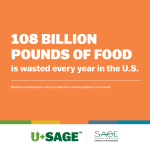As an increase in environmental, ethical, and health concerns has led to a boom in plant-based eating, soy has taken an increased role in the food industry and in North American diets. In fact, more than 25% of Americans eat soy foods or beverages once a week or more often. With greater prominence comes greater scrutiny. Although it’s FDA-approved, soy has been accused of jump-starting puberty and causing breast cancer. So what’s the deal—is soy safe?
Where Is Soy?
Edamame, tofu, miso, tempeh, seitan, soy milk, soy butter, natto, soy oil, soy nuts, and mock meats contain soy. Soy protein is also used widely throughout the food industry in small amounts to increase the shelf life and improve the texture of processed foods. It’s often used in store-bought salad dressings, energy bars, and butter substitutes.[i]
What’s in Soy?
Whether whole (as edamame) or processed (as tofu), soy is a complete plant-based source of dietary protein—by itself, it contains all nine essential amino acids humans need to survive. It’s also the only significant natural source of isoflavones, a plant-based chemical compound that imitates the hormonal activity of estrogen. Sometimes this means creating the effects estrogen would, and other times it means competing with estrogen (thus limiting its effects).
Possible Benefits
Eating significant amounts of soy (1.7 ounces a day) can lower harmful LDL cholesterol slightly, which can decrease the risk of heart disease. However, it may be less about the healthful nutrients in soy and more about the less healthful foods (like red meat) that soy replaces.
Eating soy may also help prevent osteoporosis by helping women approaching menopause build their bone mineral density.
Myths Debunked
Sadly, there’s no strong evidence that soy can protect against endometrial, ovarian, colorectal, prostate, or other hormonal cancers. It’s also unlikely that soy significantly alleviates menopausal symptoms like hot flashes. On the bright side, there’s no evidence that it causes any type of cancer[ii], nor that it has any effect on the onset of puberty or the development of secondary sexual characteristics (like breasts or pubic hair). One relatively rare side effect of heavy soy consumption is hypothyroidism, because isoflavones interfere with iodine absorption—so if you’re eating a lot of soy or feeding your infant soy formula and concerned about iodine levels, ask your doctor.[iii]
On the Fence
There are some situations where the effects of soy are still unclear. While soy is currently considered safe for women with current or past breast cancer, studies have conflicting results. Some show a decrease in breast cancer risk with soy consumption, where some show no change in risk. Other studies have demonstrated that soy food consumption in adolescence can drastically cut the risk of pre-menopausal breast cancer, but that isoflavone supplements stimulate the growth of already-present breast cancer cells. Still others show that soy food consumption reduces risk of breast cancer recurrence. If you had or have breast cancer, ask your doctor for advice on soy consumption.
Similarly, different studies have shown that soy consumption reduces, has no effect on, or exacerbates age-related memory loss. If you’re concerned about memory loss, ask your doctor.
The Verdict
We’re siding with the FDA here. In normal dietary amounts (which are generally low in the U.S. anyway), soy is safe for those without a soy allergy.[iv]
[i] Most soy in the U.S. is GMO, but organic options are available.
[ii] Long-term use of isoflavone supplements may increase the risk of ovarian cancer, but soy itself shows no such effect.
[iii] Most studies on soy consumption rely on isoflavone supplements or isolated soy protein (e.g., mock meats) in high doses, rather than smaller amounts of whole-food sources (e.g., edamame). You’re unlikely to consume the same levels in your daily life.
[iv] Although soy is one of the top 12 allergens in the U.S. and Canada, 70% of children with a soy allergy outgrow the allergy by age 10.









